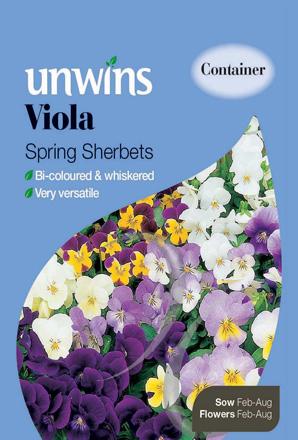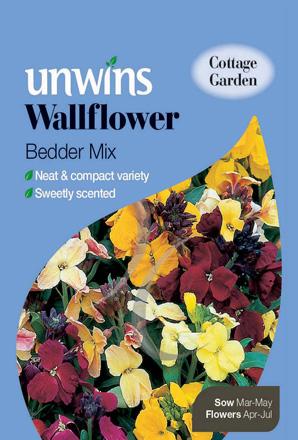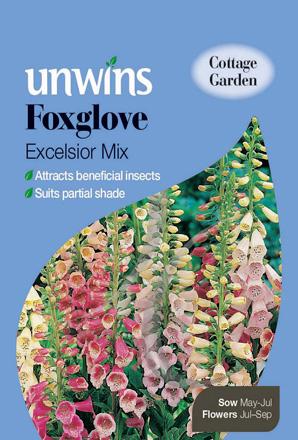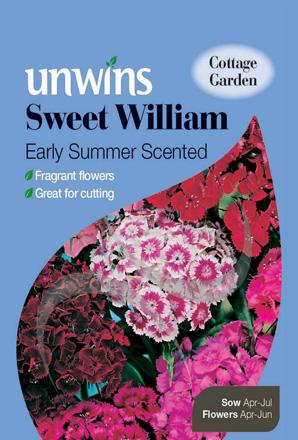Growing Biennials – well worth the wait
If you want loads of colour in the garden, biennials are the plants to grow. They can not only be grown in the border but in pots, hanging baskets and containers where they provide the longest, brightest display giving any other types a run for their money. However, they do have a disadvantage in that when they have finished flowering, they are discarded. Don’t let that put you off as when they are on show, they flower their socks off. You are able to grow lots of plants for very little cost and if you leave them to set seed, you will have new plants each year as they self-seed quite freely.
Biennials are sown one year to bloom the following spring or summer and are very easy to cultivate. Most are sown in seed trays filled with moist compost, kept in a warm, light position and when large enough to be handled, transplanted 2″ apart into trays of potting compost. Gradually acclimatise the young plants to outside conditions over a couple of weeks then plant out in the autumn. This will give them time to get established before the cold of the winter. If you have space in your garden to have a nursery bed, they can also be sown directly into well prepared soil and transplanted to their permanent position in the autumn.
Here are 9 biennials for you to try for a fantastic display next year.
Canterbury Bells (Campanula)
Canterbury Bells are an old fashioned cottage garden favourite growing to a height of 30”. With their cup-and-saucer large blooms in pink, white and blue, they not only make a beautiful border plant but last well as a cut flower.
Hesperis matronalis (Hesperis matronalis)
Sweet rocket has beautiful scented blooms usually in either white or violet. As one of the quintessential cottage garden flowers it rightly deserves a place in any garden. As a bonus, cut a few stems for a vase and it will fill the room with their perfume.
Viola
Although not strictly a biennial, violas can be sown now to flower next year. They can also be treated as an annual or short lived perennial. ‘Spring Sherbets’ are great value for money and with their cheerful, whiskered faces they look good either in the border, hanging baskets or containers. The flowers are edible and are very colourful mixed in with a summer salad.
Teasel (Dipsacus sylvestris)
The common teasel, although a native wild flower is anything but common. It is an unusual plant, attractive to bees and butterflies and is very inviting to many seed eating birds. They can also be dried and makes for an interesting display in the home.
Wallflowers (Erysimum)
If there is one plant that can give tulips and daffodils a run for their money in the spring, it’s the beautiful scented wallflower; their perfume is especially noticeable in the evenings. Interplant with taller tulips for a stunning border display.
Honesty (Lunaria)
Honesty is a two-in-one plant giving you spring blooms in rich shades of purple or white which then turn into round silvery seed pods. Leave these on the plant and they will self-seed easily or cut them for an indoor display
Foxglove (Digitalis)
The Excelsior strain of foxglove is brilliant for the back of the border and can grow to a statuesque height of 5ft. They are especially good for any shady areas and look at home amongst trees and shrubs bringing fantastic colour and form to areas that would otherwise be quite dull.
Sweet William (Dianthus barbatus)
There is no cottage garden that would be complete without a patch of Sweet Williams. These will give you armfuls of cut flowers for the home. They are the easiest of flowers to grow and so inexpensive; 450 seeds for under £1.50 – how’s that for value.
Daisy (Bellis perennis)
These little daisies flower from early spring with pom-pom blooms in colours from deep rose through shades of pink to white. The flowers, made up of tubular petals, are borne on short strong stems surrounded by a compact rosette of leaves. They also look lovely in pots and containers on the patio
Published July 13th, 2015 by Jordan. Article ref 3842
« How to repair a lawn | Secateurs – one of a gardeners best friends! »










